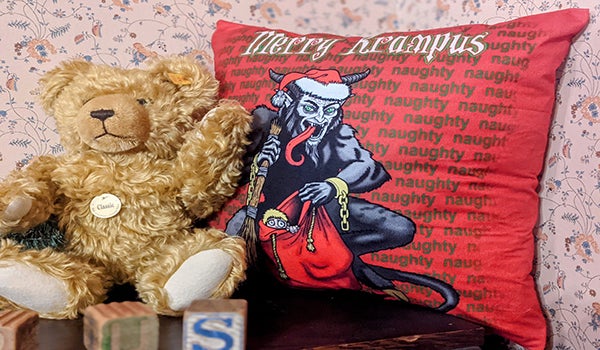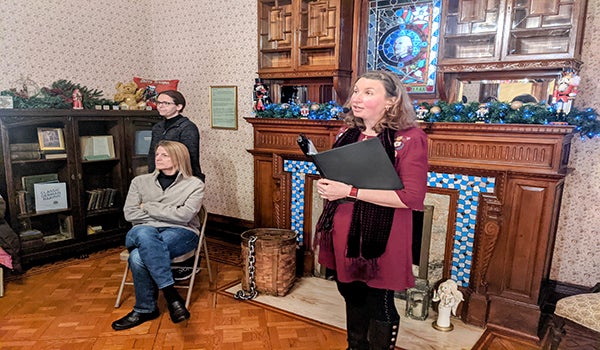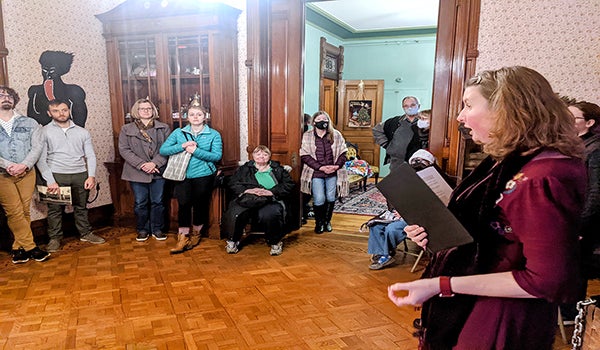Niles History Center talks Krampus at annual holiday open house
Published 12:00 pm Monday, December 13, 2021
|
Getting your Trinity Audio player ready...
|
NILES — He’s making a list and he’s checking it twice, but if you have been naughty he will not be nice.
Community members gathered at the Niles History Center Saturday night to learn the legend of Krampus at the Niles History Center’s Holiday Open House.
The event allowed guests to tour the holiday-decorated campus — which includes both the Chapin House and Fort St. Joseph — and listen to a special program about the infamous Krampus, a half-goat, half-demon monster that punishes misbehaving children during Christmas.
The program, titled “Krampus: The Darker Side of Christmas in Germany,” was held in the Chapin House library, which was decorated with the theme of Krampus by Niles police officer and Chapin Mansion docent Angela Caddy. NHC director Christina Arseneau led the discussion in place of Caddy, who was unable to attend.
Arseneau answered questions the audience had about Krampus and pointed out different aspects of Caddy’s Krampus-themed room, which featured art, German Christmas collectibles and more.
According to Arseneau, Krampus’ story originated with European pagan traditions associated with the winter solstice. The name Krampus stems from the German word Krampen, which means “claw.” As Christianity continued to spread, and despite the efforts of the Catholic church, Krampus became associated with Christmas.
“So before Christianity, of course, they had all these scary creatures, a lot of them morphed into these sort of devil-like creations,” she said. “I’m certain he takes a little bit of that with this form as well and a lot of the chain rattling, which are thought to symbolize the binding of the Devil by the church.”
The story goes that Krampus and St. Nicholas would arrive together on the evening of December 5, known as Krampusnacht, or “Krampus Night”. While St. Nicholas rewards nice children by leaving presents, Krampus would attack the children on the naughty list with branches and sticks and carry them back to his lair.
“He would come and he had a basket,” Arseneau said. “What he would do is he would hoist the basket on his back and he would carry the bad little children away with him, rattling his chains all the way. If you were especially bad, he chained you to the basket and to make sure that you didn’t escape. What a thing for a child to look forward to, you are either going to get treats in the morning or hauled away by Krampus.”
The popularity of Krampus has grown over the years, which some scholars suspect was a byproduct of the commercialization of Christmas. In Austria and Germany, an event called the Krampuslauf, or “Krampus run”, involves people dressing up as Krampus running through the streets scaring and chasing predators. Several horror films featuring Krampus have been made, including the 2015 horror-comedy “Krampus” starring Adam Scott.
Arseneau believes the legend of Krampus’ place in popular culture is secure as he offers a spooky alternative to Christmas tradition.
“I think everybody loves a little bit of mystery and things with history behind it,” she said. “There is clearly a lot of tradition behind Krampus. He’s an interesting character; everybody likes a little bit of that spookiness so I think that’s kind of why his popularity has caught on.”









